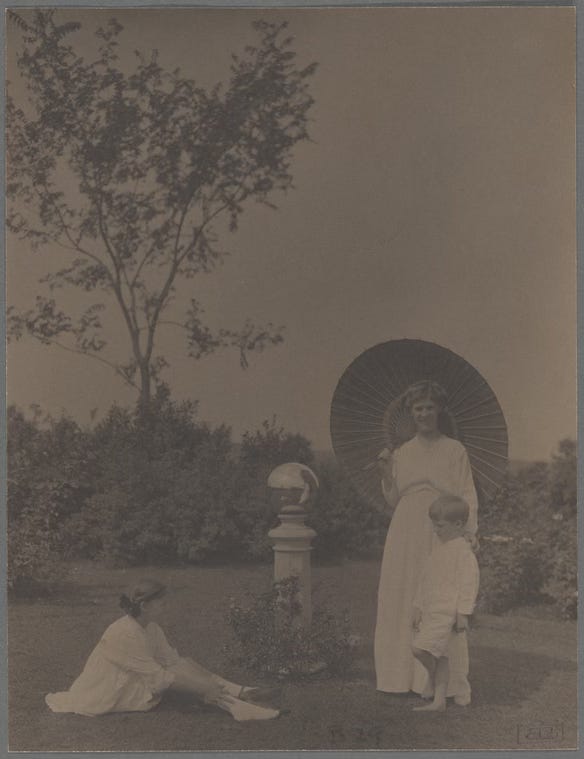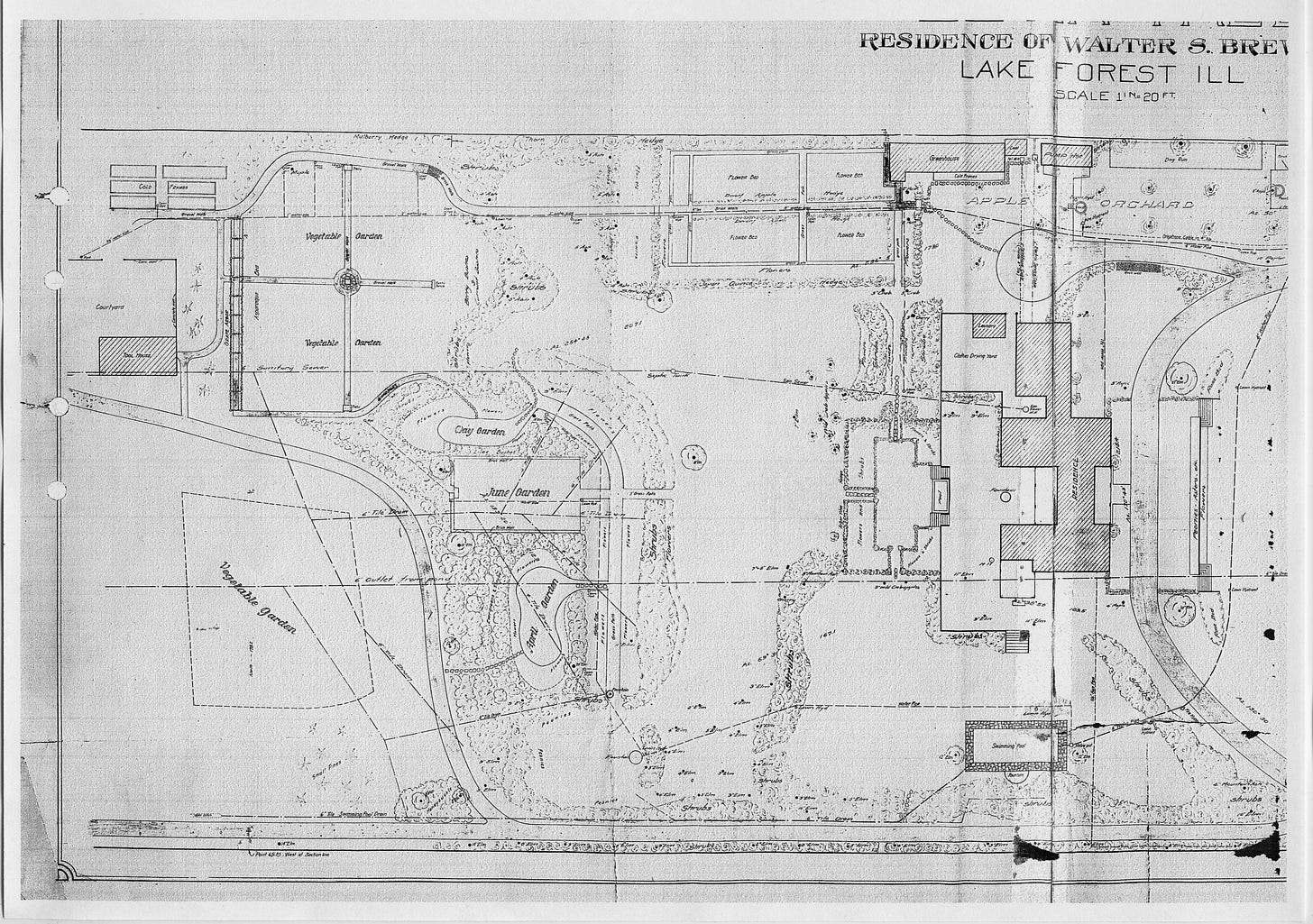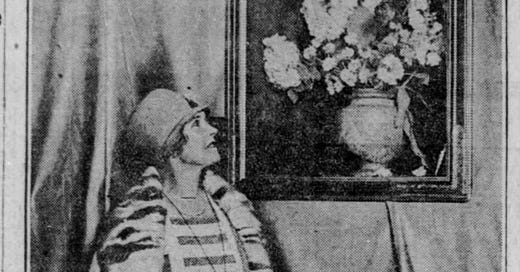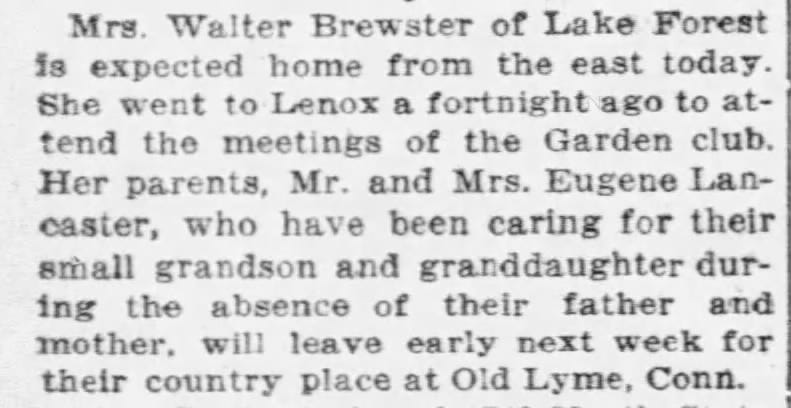I didn’t know what, or rather who, I’d find when I opened The Little Garden for Little Money, by Kate L. Brewster (1924), part of a series of books called The Little Garden Series edited by Mrs. Francis King (Louisa Yeomans King).
From Mrs. King’s preface, we find out quite a bit about Kate L. Brewster.
Few amateur gardeners have accomplished as much as Mrs. Walter Brewster, the writer of this book, in the course of seventeen years. The development of her own property of twenty-five acres into a most interesting whole, yielding in profusion vegetables, flowers, fruits has been her private work in gardening. Her public efforts have been mainly among Garden Clubs. A founder and one of the first vice presidents of the Garden Club of America, Mrs. Brewster has been an officer on the board of directors ever since. She was the second editor of the Bulletin of the Garden Club of America, doing this work with immense skill for six years— from 1915 to 1921— and bringing up that charming publication in size from eight pages to its present sixty-four. Mrs Brewster is now in her third year as president of the Garden Club of Lake Forest, Illinois and is a life member of the New York Horticultural Society as well as a member of the Royal Horticultural Society, London
That introduction gave me enough clues to find out more about Kate via Ancestry.com and Newspaper.com.
Kate’s Biography
Kate L. Brewster was born in 1879 and died in 1947. Her maiden name was Kate Lancaster. She married Walter S. Brewster in 1903. On the Find-a-Grave site, someone added a little newspaper snippet about her wedding, which was unusual because she didn’t have any parties leading up to the wedding, and it was a small wedding in her parent’s home. She had two children, a girl born in 1904 and a boy born in 1910. (Side note: I read another newspaper article about her son’s wedding, which was also notable for taking place quickly over a Thanksgiving holiday. The author of the article noted in particular who wasn’t able to attend, including his sister, because the wedding took place without much planning.)

A newspaper clipping from the Chicago Tribune, dated July 9, 1916, shows the kind of life Kate and her family led.
In the 1930 census record, Kate’s household included a chauffeur, a butler, a cook, and three maids. In addition, her son and her father were also living with them in their home on Lakeview Avenue in Chicago. The home had six bedrooms and seven bathrooms, and recently sold for almost $5,000,000.
From the census records, it appears she attended high school, but never went to college.
Searching elsewhere for information on Mrs. Walter S. Brewster, and also searching on her maiden name, Katherine Lancaster, I found that Kate was “a chairman of the committee for the Fatherless Children of France, and was given the Medal of Legion of Honor in recognition of her war work.”
In addition to her work during World War I (which may have included spending time in France with the American Red Cross, which I put in my notes but can’t find the website reference for now) and her work as a garden writer and editor, Kate and her husband helped found the Chicago Art Institute. Some of their correspondence related to buying and selling art— including pieces by Picasso and Cezanne—is archived on a Smithsonian website. They seemed to have owned several paintings that others wanted to buy.
I also found newspaper articles from 1937 and 1939 which lead me to believe that the Brewsters later spent winters in Hawaii.
Gardening Life
Kate was obviously an avid gardener, but one wonders how much of the work she did and how much was done by gardeners she hired. I’m not sure it matters. Her main gardens were located at their home in Lake Forest, Illinois, which as noted by Mrs. Francis King, was a 25 acre estate. They called that home Covin Tree. (A covin tree is “a tree in front of a Scottish mansion beneath which a laird or owner formerly met his visitors or retainers.”)
You can view part of the design of the garden in the Lake Forest College archives.

I suspect Kate was quite involved in the design of those gardens. In the “Society and Entertainment” column in the Chicago Tribune, June 16, 1916, they noted that Kate was among those who had enrolled in a summer course on landscape gardening at Lake Forest College.
On the Lake Forest College archives, they note,
“Kate Brewster was a leading gardener nationally, edited (printed and paid for) the early Bulletin of the Garden Club of America. She visited the English natural garden guru William Robinson at his estate Gravetye in England, 1922 (a book in the coll. from him then) and then wrote her own book, "The Little Garden for Little Money," 1924. She had garden rooms for different spring months in the manner of Gertrude Jekyll, who introduced the colorful impressionist flower borders well-known today (locally Camp Rosemary; also Ragdale). This now is subdivided but that June garden could still have remnants on the new property west.....”
In one of the Bulletins of the Garden Club of America, her garden was described as an Italian-style garden.
Kate was also listed as the landscape designer for Edgecliff, a house and garden in Winnetka, Illinois.
One other fascinating tidbit, if you are familiar with the Rome Prize, from the American Academy in Rome—perhaps after reading Four Seasons in Rome: On Twins, Imsomnia, and the Biggest Funeral in the World by Anthony Doerr—you’ll find that one of the prizes awarded for Landscape Architecture is the Gilmore D. Clark and Michael I. Rapuano/Kate Lancaster Brewster Rome Prize.
So perhaps we should say that Kate was more interested in landscape architecture than gardening?
I also discovered in my long, winding searches that there is a bearded iris and also a daffodil named ‘Mrs. Walter Brewster’ but I cannot find either one for sale. These plants may be hidden in someone’s garden, as this book was hidden on my library shelf, with the owner not realizing what a fascinating life Kate L. Brewster (Mrs. Walter S. Brewster) lived.
All that, and I haven’t even mentioned her involvement in garden clubs beyond her six years of editing Bulletin of the Garden Club of America. There are numerous newspaper articles about her involvement in all kinds of garden club activities, including both exhibiting and judging flowers at numerous flower shows.
Garden Writing
If you head over to Google’s book site, you can explore those garden club bulletins Kate edited for six years. Be careful as this might be a deep rabbit hole because, as noted above, Kate increased the size of the bulletins substantially.
And she wrote that one book, The Little Garden for Little Money (1924).
Kate notes in the forward of the book that what the book wanted to call itself was “The Fool-proof Garden.” It’s 109 pages of Brewster’s advice for people with small gardens and not much money to spend on them.
Chapter headings include: Getting Ready to Garden; The Garden Plan; The Garden Wall; Special Gardens: Rock Gardens, Spring Gardens, Wild Gardens, Growing Specialties; The First Choice of Plant Material; Roses, Irises and Peonies; What to Grow From Seed and How to Grow It; Garden Generalities; Necessary and Uninteresting Garden Details; Plants for the Little Garden; Epilogue; Planting Combinations and Color Schemes.
In the chapter “Necessary and Uninteresting Garden Details,” Kate covered a wide range of topics, from proper labeling (she’s a big believer in labeling) to plant diseases, fertilizing, covering in winter, and staking..
Overall, the book seems like a practical and no-nonsense guide to gardening, a way to avoid expensive mistakes with tips on how to save money. An example of one of her money-saving tips is to share expensive tools like wheelbarrows, mowers, etc., with a few neighbors. She noted the pitfall of everyone wanting to use the same tool at the same time, but thought a schedule could be worked out.
In the chapter on Special Gardens, she offered advice to those who might be inclined to specialize in a particular plant.
But specializing soon turns into a rather expensive hobby as you begin to want the newest and rarest which are by no means always the best. It also has the disadvantage of providing flowers through a very short period; but it offers an absorbing recreation for the would-be horticulturalist with a tiny backyard and a taste for experiment.
Nearly 100 years later, that advice on specializing still holds true!
If you’d like to read this book for yourself, you’ll find it is one of the books available on Google Books.
Who’s Next?
I hope you enjoyed this look back at an unexpected Lost Lady of Garden Writing. I have a growing list of “Lost Ladies,” but if you know of a lost lady of garden writing you think I should find let me know in a comment or email, and I’ll check her out.






excellent post!
It surprises me that she felt equipped to write a book on gardening with little money as that doesn't seem to be a challenge she ever dealt with.